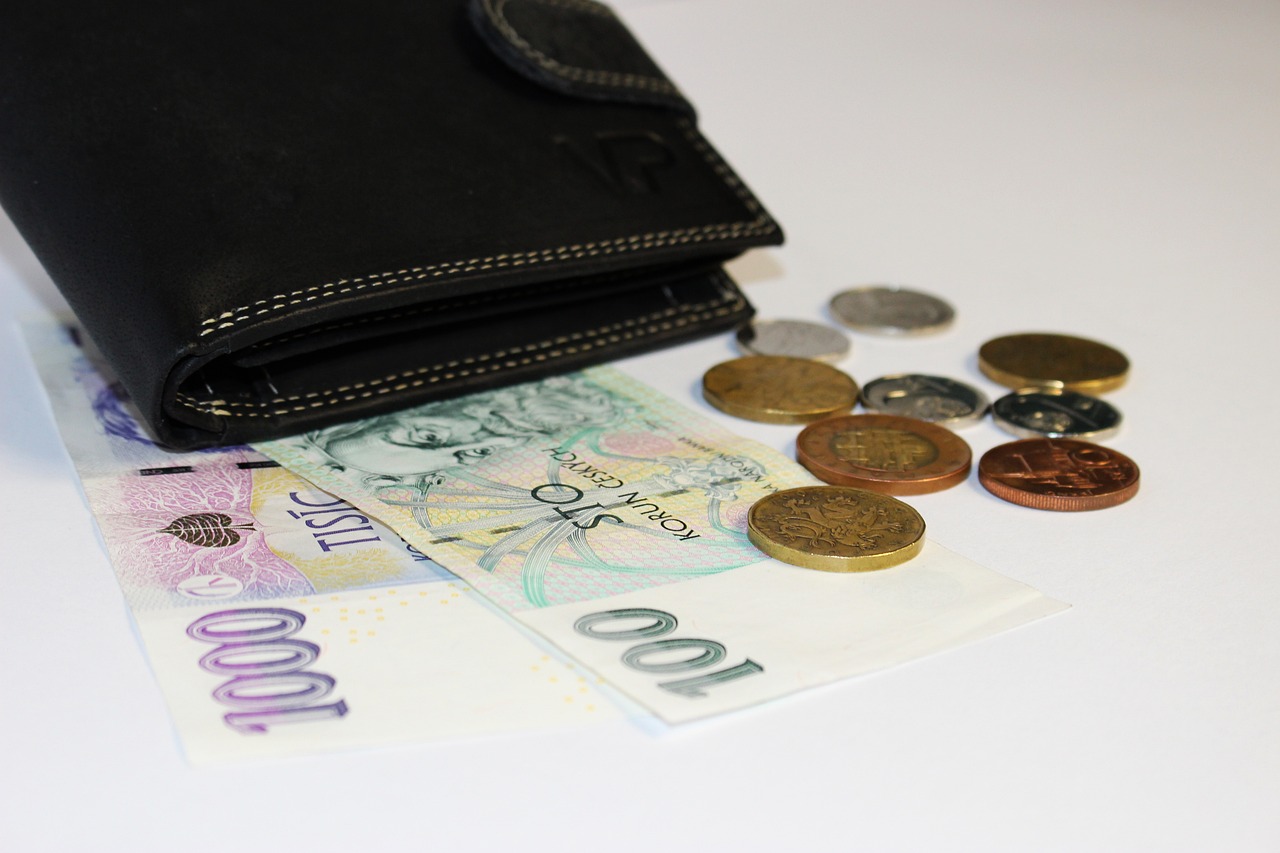Uncovering the Truth: Government Regulations and Tips for Sending Money to the Philippines
GPT_Global - 2024-01-16 21:30:10.0 581
Are there any government regulations for sending money to the Philippines?
When it comes to sending money to the Philippines, there are certain government regulations that need to be followed. These regulations are in place to ensure the safety and security of the remittance process, as well as to prevent any illegal activities such as money laundering and terrorism financing.
The main regulatory body for remittance businesses in the Philippines is the Bangko Sentral ng Pilipinas (BSP), which is the central bank of the country. The BSP has strict guidelines and requirements for remittance companies to follow, including the need for proper licenses and registrations before being able to operate.
For individuals who wish to send money to the Philippines, there are also certain limits and restrictions set by the BSP. If the amount to be sent exceeds $10,000 USD, it must be declared to the Philippine authorities. Additionally, the sender will need to provide proof of the source of the funds and the purpose of the transaction.
Remittance companies are also required to adhere to Know Your Customer (KYC) and Anti-Money Laundering (AML) protocols. This means that they must verify the identity of their clients and monitor their transactions to ensure they are not involved in any illegal activities.
Overall, these regulations aim to protect both the sender and recipient of remittances, as well as the integrity of the financial system. So if you are planning to send money to the Philippines, make sure to do so through a reputable remittance company that follows all the necessary government regulations.

Is PayPal a viable option for sending money to the Philippines?
PayPal has become a popular platform for sending money to the Philippines, thanks to its convenient and secure online payment services. The process of sending money through PayPal is simple - all you need is an email address linked to your account and the recipient's email address or cellphone number. This makes it an attractive option for those who want to send money quickly and without having to deal with the hassles of traditional bank transfers.
Moreover, PayPal offers competitive exchange rates and low transaction fees, making it a cost-effective way to send money to the Philippines. With its wide network of partner banks and financial institutions in the country, recipients can easily withdraw their funds or use them for online purchases. PayPal also offers the option to transfer funds directly to a debit or credit card, further simplifying the process.
One of the major advantages of using PayPal for remittances is its speed. Transactions are usually processed within minutes, allowing recipients to receive the funds almost instantly. This is especially beneficial for emergency situations where immediate financial assistance is needed. Additionally, PayPal's secure encryption technology and fraud prevention measures provide peace of mind for both the sender and receiver.
However, one drawback of using PayPal for sending money to the Philippines is that not all merchants or individuals accept this form of payment. In such cases, alternative methods like bank transfers or money transfer services may be necessary.
In conclusion, PayPal is a viable option for sending money to the Philippines for its fast, affordable, and convenient services. It is a trusted and reliable platform for remittances, and its popularity continues to grow among overseas Filipinos. With its ever-expanding network and user-friendly interface, PayPal remains a top choice for those looking to send money to loved ones in the Philippines.
Do I need to have a specific bank account to send money to the Philippines?
Do I need to have a specific bank account to send money to the Philippines?
Sending money to the Philippines is a common practice for many people who have family, friends, or business partners in the country. With the rise of remittance businesses, transferring funds has become easier and more convenient. However, one question that may arise is whether or not you need to have a specific bank account to send money to the Philippines.
The short answer is no, you do not need a specific bank account to send money to the Philippines. Remittance businesses offer a variety of options for sending money, such as online transfers, cash pick-up, and bank deposits. These options allow you to choose what works best for you and your recipient in the Philippines.
Some remittance businesses may require you to have an account with them, but this is only for tracking and convenience purposes. If you do not have an account with the remittance company, you can still send money through other methods. However, it is always a good idea to compare rates and fees between different remittance businesses to ensure you are getting the best deal.
When sending money to the Philippines, it is important to have the correct information for your recipient, such as their full name, address, and contact information. This will ensure that the money is received by the intended person and minimize any potential delays. Some remittance businesses may also require you to provide identification, such as a valid ID or passport, before sending money to the Philippines.
In conclusion, you do not need to have a specific bank account to send money to the Philippines. Remittance businesses offer a variety of options for sending money, and it is always important to compare rates and fees to get the best deal. Just make sure to have the correct information for your recipient and any necessary identification to ensure a smooth and secure transaction.
Can I cancel a money transfer to the Philippines after it has been sent?
Sending money to loved ones in the Philippines is a common practice for many people living abroad. However, sometimes circumstances may arise where you need to cancel a remittance that has already been sent. While this can be a stressful situation, it is important to understand the process and your options for canceling a money transfer to the Philippines.
The first thing to keep in mind is that once a money transfer has been sent, it cannot be canceled or reversed. This is because the funds have already been deposited into the recipient's bank account or picked up in cash. Therefore, it is important to double check all the information before sending a remittance to ensure it is accurate and complete.
If you do need to cancel a money transfer, the best course of action is to contact the remittance company as soon as possible. They will be able to provide guidance on the next steps and any fees that may be associated with canceling the transaction. Depending on the specific company and circumstances, they may be able to put a stop payment on the transfer or issue a refund to the sender.
Another option is to contact the recipient and request them to return the funds. If the recipient has not yet picked up the money or withdrawn it from their bank account, they may be able to return it to you. However, this is not a guaranteed solution and ultimately the decision to return the funds is up to the recipient.
In some cases, if the transfer has been marked as "pending" or "in process," it may be possible to cancel the transaction through the remittance company's online system or by contacting their customer service. Again, this will depend on the specific company policies and processes.
In summary, canceling a money transfer to the Philippines after it has been sent is not always possible. It is important to carefully review all information before sending a remittance to avoid any issues. In case of an emergency, contacting the remittance company as soon as possible is the best course of action to explore potential solutions.
How can I ensure that my recipient receives the full amount of money in the Philippines?
Remittance is a popular way to send money to loved ones in the Philippines. However, it's important to ensure that the recipient receives the full amount without any hidden fees or deductions. Here are some tips on how to make sure that your recipient gets the full amount of money in the Philippines.
1. Use a reputable remittance company: It's important to do your research and choose a trustworthy remittance company. Look for companies with good reviews and a track record of reliable service. This can help guarantee that your recipient will receive the full amount of money without any unexpected deductions.
2. Check for exchange rates and fees: Some remittance companies may offer low fees but use an unfavorable exchange rate. Make sure to compare exchange rates and fees from different companies to ensure that your recipient will receive the full amount in their local currency.
3. Opt for direct bank deposits: Instead of opting for cash pick-up, consider sending money directly to your recipient's bank account. This can often result in lower fees and a better exchange rate, ensuring that your recipient will receive the full amount without any additional charges.
4. Avoid using credit cards: Using a credit card to send money to the Philippines can incur high transaction fees and currency conversion charges. It's best to use a debit card or opt for a bank transfer to avoid these additional fees.
5. Be aware of hidden fees: Some remittance companies may have hidden fees, such as service charges or additional fees for certain payment methods. Make sure to read the fine print and ask about any potential fees to avoid surprises that could deduct from the full amount intended for your recipient.
By following these tips, you can ensure that your recipient receives the full amount of money in the Philippines, allowing them to use the funds as intended without any unexpected deductions. Remember to choose a reputable remittance company, compare exchange rates and fees, opt for direct bank deposits, avoid credit cards, and be aware of any hidden fees. This way, you can have peace of mind knowing that your money will reach your recipient in its entirety.
Are there any hidden fees when sending money to the Philippines?
When it comes to sending money to the Philippines, it's natural to be concerned about any potential hidden fees. After all, you want to make sure that your hard-earned money gets to its destination without any unexpected costs along the way. So, are there any hidden fees when sending money to the Philippines? The answer is, it depends.
Firstly, it's important to choose a reputable remittance service provider that is transparent about their fees. This will help you avoid any hidden charges that may pop up when making a transaction. Make sure to research different providers and compare their fees before making a decision.
One common fee that may not be immediately obvious is the currency exchange rate. When sending money to the Philippines, you'll need to convert your currency into Philippine pesos. Some providers may offer competitive exchange rates, while others may tack on additional fees to make a profit.
Another factor to consider is the method of transfer. Bank transfers may seem like a convenient and secure option, but they often come with high fees. Some remittance services may offer lower fees for cash pickups or mobile wallet transfers, so it's worth looking into alternative methods.
It's also important to be aware of any third-party fees that may be involved in the transfer process. These can include international wire transfer fees or fees charged by the recipient's bank. Be sure to clarify these fees with your chosen remittance service provider beforehand.
Overall, it's crucial to do your research and choose a reliable and transparent remittance service when sending money to the Philippines. By understanding the potential fees involved and comparing providers, you can ensure that your loved ones receive the full amount of the funds you send without any hidden costs.
Can I send money to the Philippines on a recurring basis?
Sending money to the Philippines on a recurring basis can be convenient and hassle-free with the right remittance service. Whether you are supporting family members, paying for rent or bills, or investing in businesses, regularly sending money to the Philippines is made easier through scheduled transfers.
At XYZ Remittance, we offer a reliable and efficient platform for recurring remittance to the Philippines. Our convenient online system allows you to set up automatic transfers on a weekly, bi-weekly, or monthly basis. You can choose from multiple payment methods such as bank transfer, credit card, or debit card to fund your transfers.
With our competitive exchange rates and low fees, you can rest assured that your money will reach your loved ones in the Philippines promptly and at a reasonable cost. Our secure and encrypted website guarantees the safety of your personal and financial information, giving you peace of mind when sending money to the Philippines.
Additionally, our customer support team is available 24/7 to assist you with any inquiries or concerns you may have. We understand the importance of timely and reliable remittance, and we strive to provide the best service possible to our customers.
With automatic recurring transfers, you no longer have to worry about missing a payment or forgetting to send money. Our system ensures that your transfers are made on time, allowing for a seamless and stress-free experience. Plus, with the option to track your transfers online, you can easily monitor the progress of your recurring payments anytime.
So whether you are an overseas Filipino worker, a student studying abroad, or a business owner with regular payments to make in the Philippines, XYZ Remittance has got you covered. Trust us to handle your recurring remittance needs with efficiency, security, and convenience.
About Panda Remit
Panda Remit is committed to providing global users with more convenient, safe, reliable, and affordable online cross-border remittance services。
International remittance services from more than 30 countries/regions around the world are now available: including Japan, Hong Kong, Europe, the United States, Australia, and other markets, and are recognized and trusted by millions of users around the world.
Visit Panda Remit Official Website or Download PandaRemit App, to learn more about remittance info.



